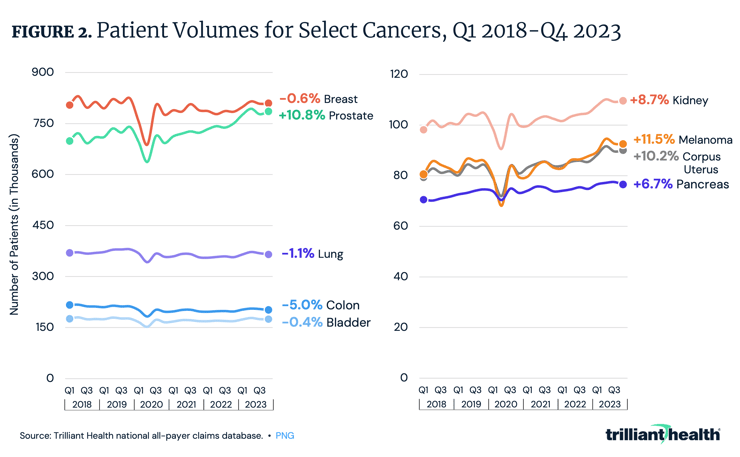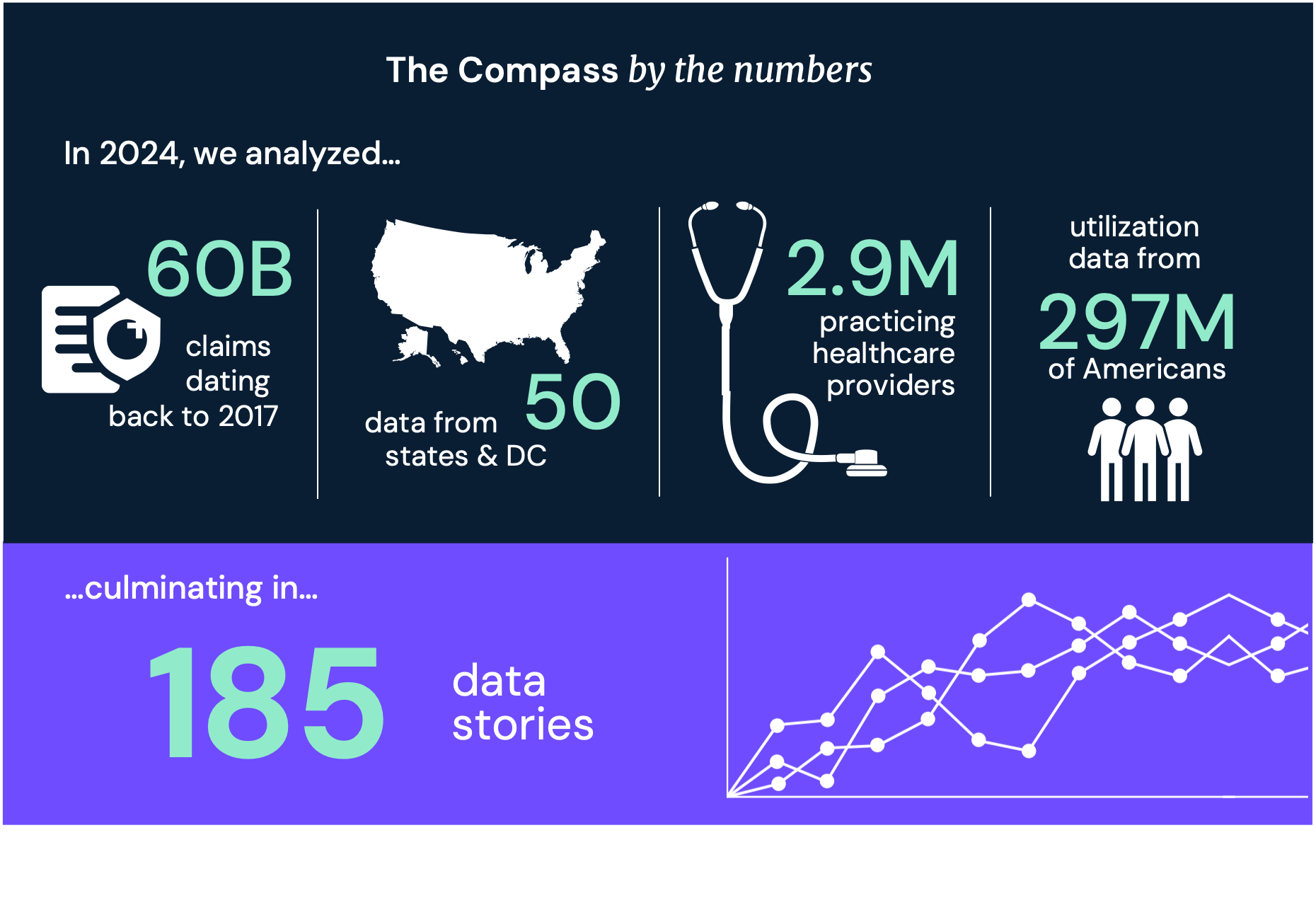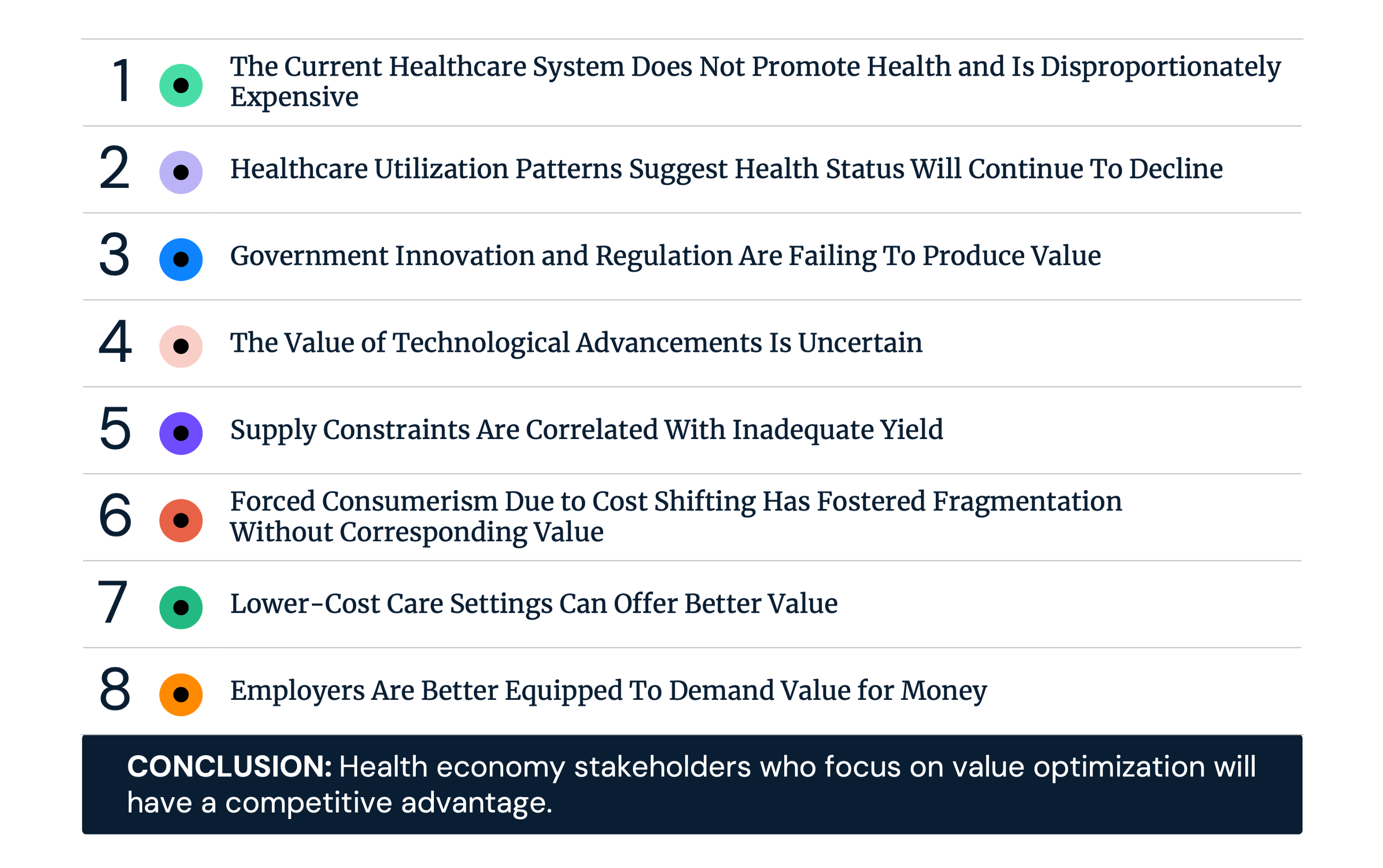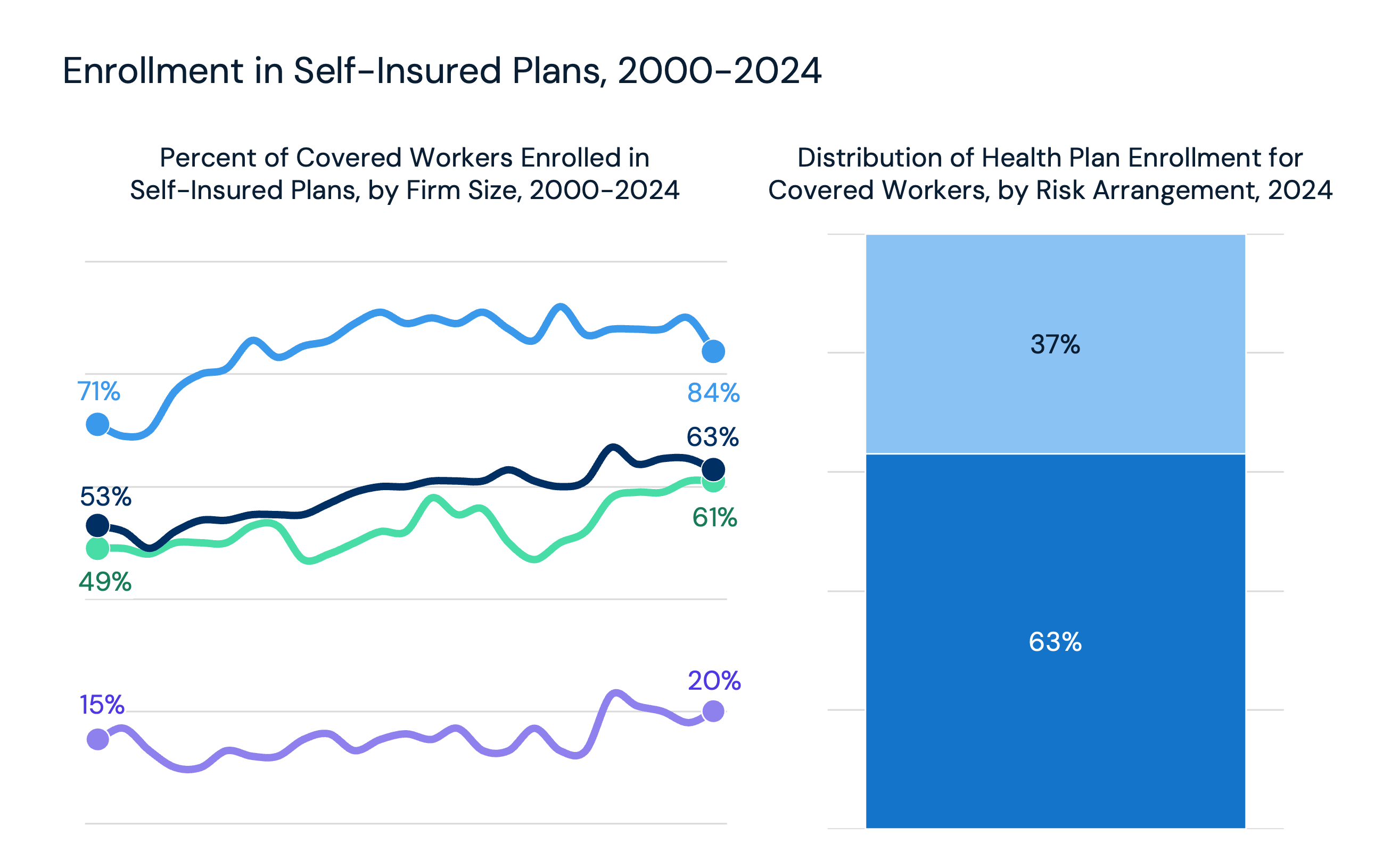Studies Archive
Longitudinal Analysis of Patients Receiving Treatment for the Most Common Cancers Reveals Increases for Several Types
July 14, 2024Key Takeaways
- Despite the nationwide decline in healthcare utilization during the COVID-19 pandemic, patient volumes for prostate, corpus uterus, kidney and pancreatic cancers, as well as melanomas, generally increased between 2018 and 2023.
- Comparing Q4 2018 to Q4 2023, patient volumes rose by 10.8% for prostate cancer, 8.7% for kidney cancer, 11.5% for melanomas, 10.2% for corpus uterus cancer and 6.7% for pancreatic cancer.
Previously, we studied the factors influencing cancer incidence, prevalence and mortality in the U.S. that present enduring and emerging disease management challenges.1 Despite years of declining national mortality rates, cancer prevalence is projected to increase over the next two decades, making it a significant national and global health challenge. As post-pandemic trends in screening, diagnosis, treatment and cancer severity emerge, we focused on examining trends in patient volumes for the most common cancers in the U.S through 2023.
Background
Controlling for population growth, the rate of cancer incidence slightly declined but fluctuated between 1999 and 2021, ranging from 450 to 491 per 100K, and totaled 439 per 100K in 2021.2 However, there are meaningful differences in the incidence rates of the most common cancers.
Between 1999 and 2019, the incidence rates for cancers of the corpus and uterus, kidney, pancreas and melanomas increased, while rates for prostate, lung, colon and bladder cancers declined (Figure 1). The breast cancer rate remained relatively unchanged. Approximately $183B was spent on cancer-related care in 2015, and this amount is projected to grow to $246B by 2030, an increase of 34.4%.3
Additionally, the Producer Price Index (PPI) for malignant neoplasms (i.e., cancers), which measures the average change over time in the prices domestic producers receive for their output, has trended upwards, increasing by 23.6% from 2019 to 2023.4
The declining health status of Americans, particularly among younger individuals without pre-existing conditions, together with projected cancer incidence and mortality rates, underscores concern about worsening acuity and cancer incidence. These trends are reflected in increasing media coverage and early academic research signaling a rise in cancer cases, particularly among younger Americans.5,6,7,8,9,10
Our previous research observed that patients treated in 2022 for certain cancers, notably breast and colon cancer, were generally healthier than those with the same diagnosis in 2017.11 While this trend was not universal across all cancer types studied, it is an important dynamic to monitor closely.
Given these growing signals and the gap in existing literature regarding real-time trends in cancer incidence and prevalence by cancer type, we examined patient volumes for the 10 most common cancers between 2018 and 2023.
Analytic Approach
Leveraging our national all-payer claims database, we analyzed quarterly patient volumes for breast, prostate, lung, colon, bladder, kidney, corpus uterus and pancreatic cancers, as well as melanomas between 2018 and 2023. We examined patients in aggregate and by two age groups: ages 0 to 45 and ages 46 and older.
Interested in learning about trends beyond the most common cancers?
Our Service Line Intelligence | Oncology dashboards allow users to track near-real time oncology utilization data to answer specific questions.
Findings
Despite the nationwide decline in healthcare utilization during the COVID-19 pandemic, patient volumes for prostate, corpus uterus, kidney and pancreatic cancers, as well as melanomas, generally increased between 2018 and 2023 (Figure 2).12 In contrast, patient volumes for colon and lung cancer generally decreased, while volumes for breast and bladder cancers remained relatively consistent.
Comparing Q1 2018 to Q4 2023, patient volumes rose by 10.8% for prostate cancer, 8.7% for kidney cancer, 11.5% for melanomas, 10.2% for corpus uterus cancer and 6.7% for pancreatic cancer. Conversely, volumes decreased by 0.6% for breast cancer, 1.1% for lung cancer, 5.0% for colon cancer and 0.4% for bladder cancer.
While there is variation in the volume of patients being seen for these cancers between 2018 and 2023, there is further variation by age group.
Analyzing Patient Volumes for the Most Common Cancers by Age Cohort
Segmenting patients by age reveals noteworthy differences in volumes for the most common cancers. Comparing Q4 2018 to Q4 2023, the volume of patients ages 46 and older treated for colon cancer decreased by 5.6%, while the volume of patients ages 45 and younger rose by 10.0%, consistent with emerging reports of a rise in colon cancer among younger Americans (Figure 3).
Similarly, the volume of patients ages 46 and older treated for breast cancer decreased by 1.0%, while the volume of patients ages 45 and younger rose by 6.6%. Conversely, the volume of patients ages 46 and older treated for prostate cancer rose by 10.8%, while the volume of patients ages 45 and younger declined by 17.3%. Patient volumes increased for both age cohorts for kidney, corpus uterus and pancreatic cancers, and decreased for both cohorts for lung and bladder cancers and non-Hodgkin lymphoma.
Conclusion
The steady rise in cancer incidence over the past two decades, coupled with projections indicating further increases and our findings revealing increases in patient volumes for certain cancers, underscores the urgent need for proactive measures. Our analysis reveals distinct variations in cancer trends by age cohort. These findings highlight the need for continued vigilance in cancer monitoring and the importance of age-specific strategies in cancer prevention, diagnosis and treatment.
These trends raise several important concerns and questions. Are there clinical similarities among patients receiving care for cancers that have increased? Are there differences between cancers that have increased and those that showed little change? What are the underlying reasons for the variation in patient volumes across age cohorts? Will screening recommendations and practices evolve to reflect emerging trends in diagnosis and mortality? How should or can clinicians adjust their practice patterns given the growing evidence of more early-onset cancers? How will policymakers and payers respond to the inevitable increase in spending on cancer care?
With cancer incidence projected to increase in the coming decades, addressing these questions will be crucial for managing the growing economic and health burden attributed to cancer on the healthcare system.
Thanks to Colin Macon and Katie Patton for their research support.
- Specialty Care
- Disease Burden






















.png)

















.png?width=171&height=239&name=2025%20Trends%20Report%20Nav%20(1).png)






